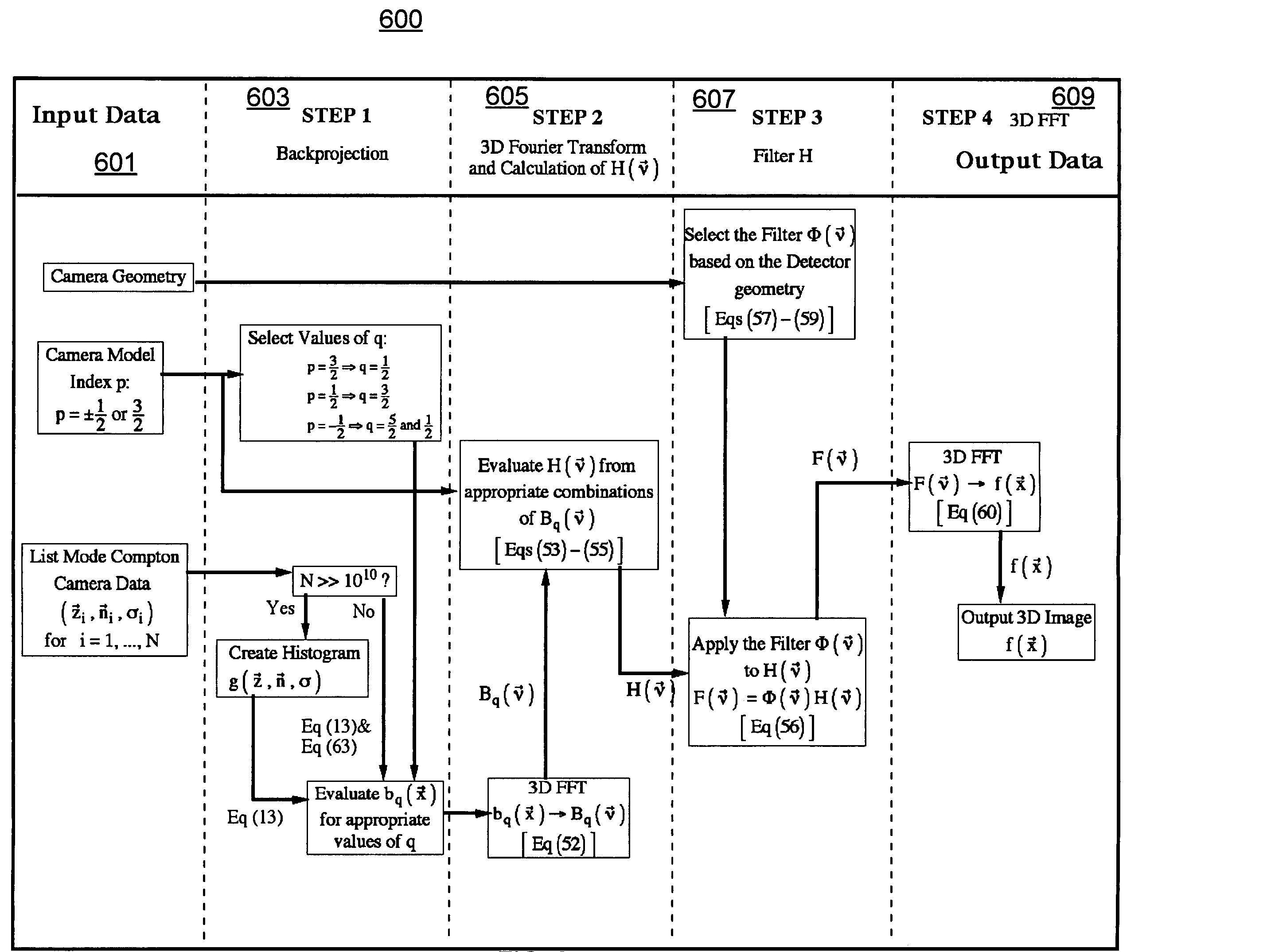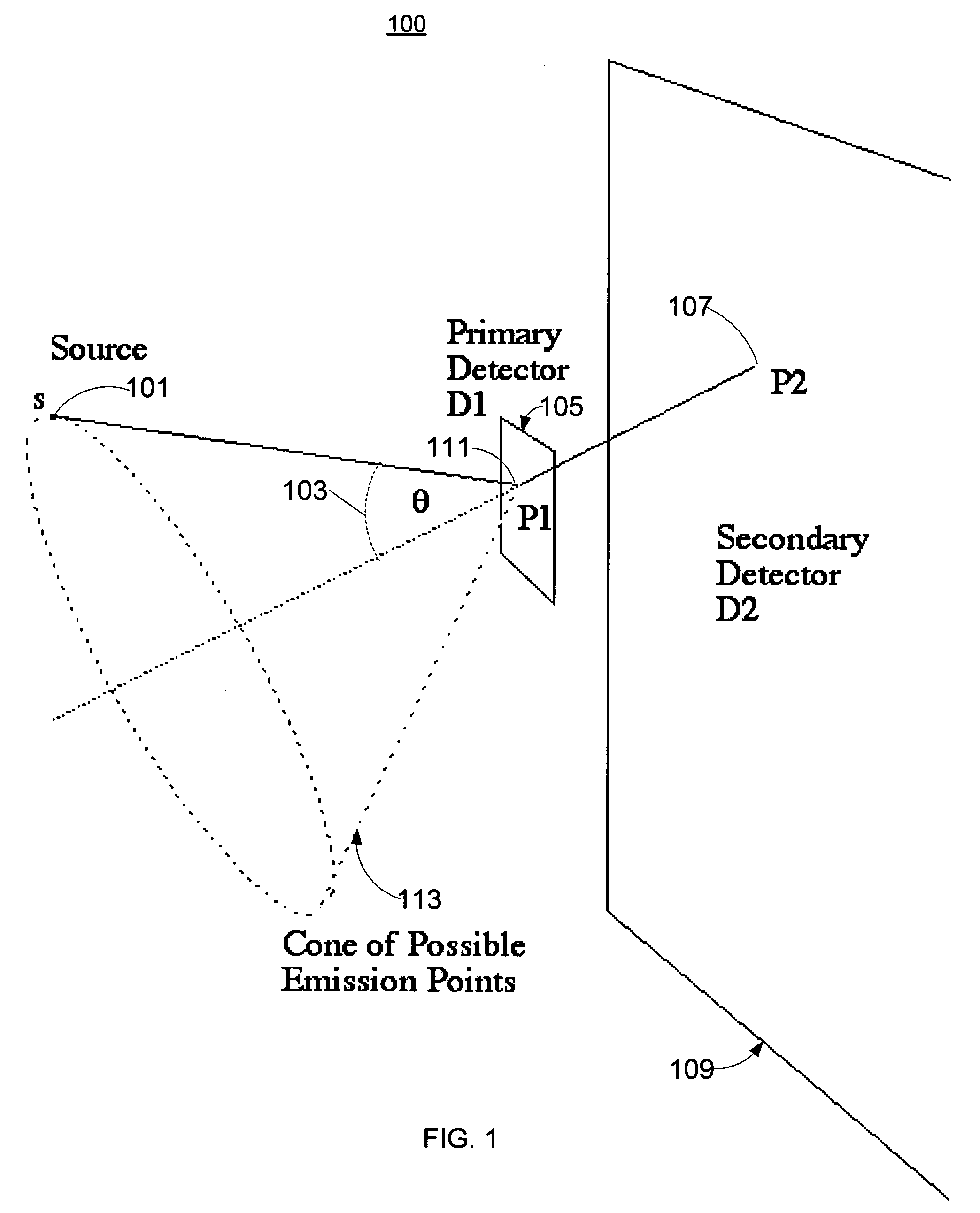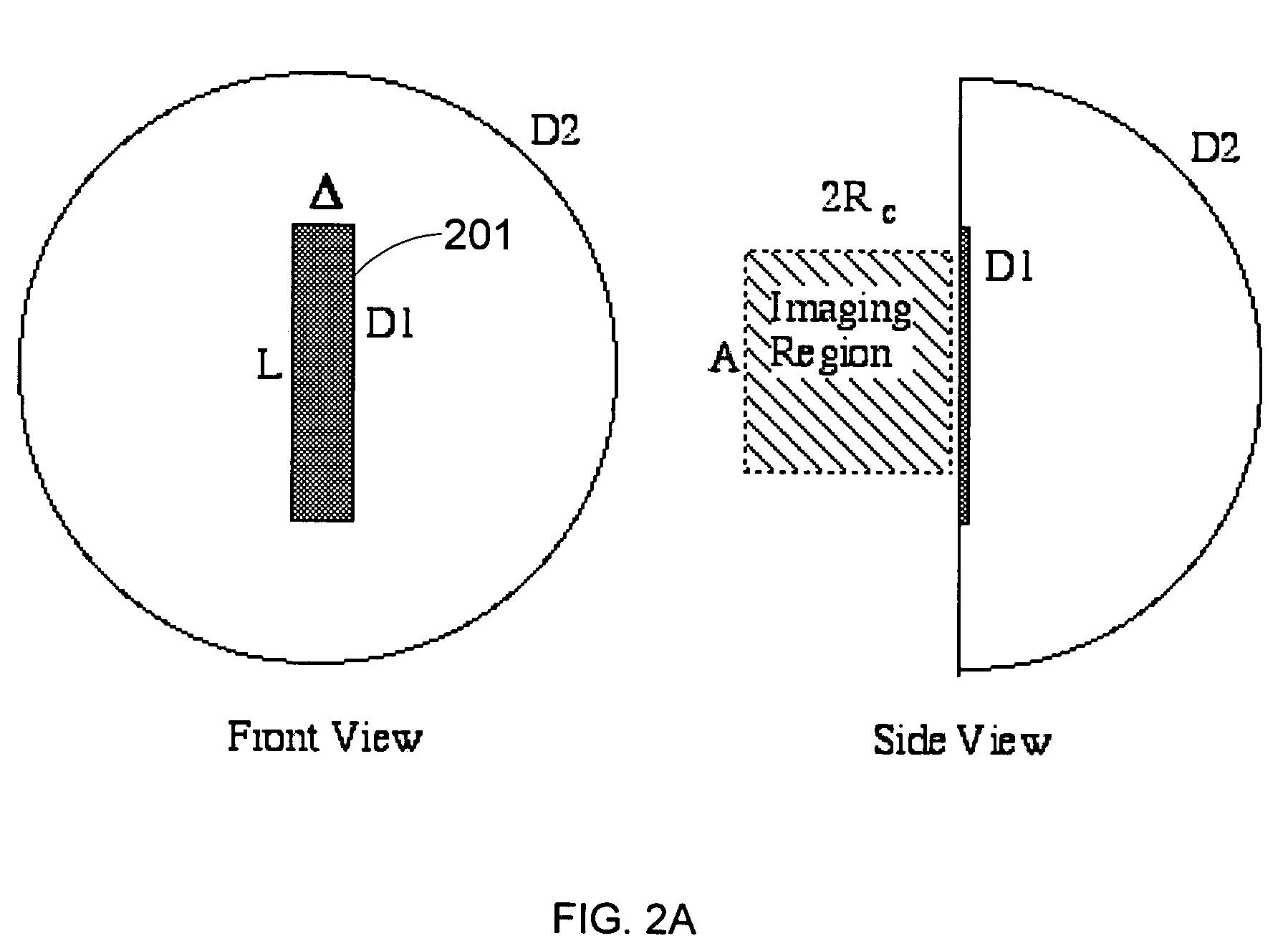Filtered backprojection algorithms for compton cameras in nuclear medicine
- Summary
- Abstract
- Description
- Claims
- Application Information
AI Technical Summary
Benefits of technology
Problems solved by technology
Method used
Image
Examples
Embodiment Construction
[0028]The following terminology and notation is referenced in the following discussion.[0029]BP backprojection operator[0030]FBP filtered backprojection[0031]FT Fourier transformation[0032]LHS left hand side of an equation[0033]RHS right hand side of an equation[0034]voxel The smallest distinguishable box-shaped part of a three-dimensional space. A particular voxel will be identified by the x, y and z coordinates of one of its eight corners, or perhaps its centre. The term is generally used in three dimensional modeling and sometimes generalized to higher dimensions.[0035]δ( ) Dirac delta function. The function is defined by the relation f(0)=∫dx f(x)δ(x) for all integrable functions f(x). An alternative definition is δ(x)=limλ→012πλexp(-x2λ2).[0036]{right arrow over (e)}x, {right arrow over (e)}y, {right arrow over (e)}z unit vectors corresponding to the x, y, and z coordinates, respectively.
[0037]A mathematical model is proposed for Compton cameras. This model describes th...
PUM
 Login to View More
Login to View More Abstract
Description
Claims
Application Information
 Login to View More
Login to View More - R&D
- Intellectual Property
- Life Sciences
- Materials
- Tech Scout
- Unparalleled Data Quality
- Higher Quality Content
- 60% Fewer Hallucinations
Browse by: Latest US Patents, China's latest patents, Technical Efficacy Thesaurus, Application Domain, Technology Topic, Popular Technical Reports.
© 2025 PatSnap. All rights reserved.Legal|Privacy policy|Modern Slavery Act Transparency Statement|Sitemap|About US| Contact US: help@patsnap.com



